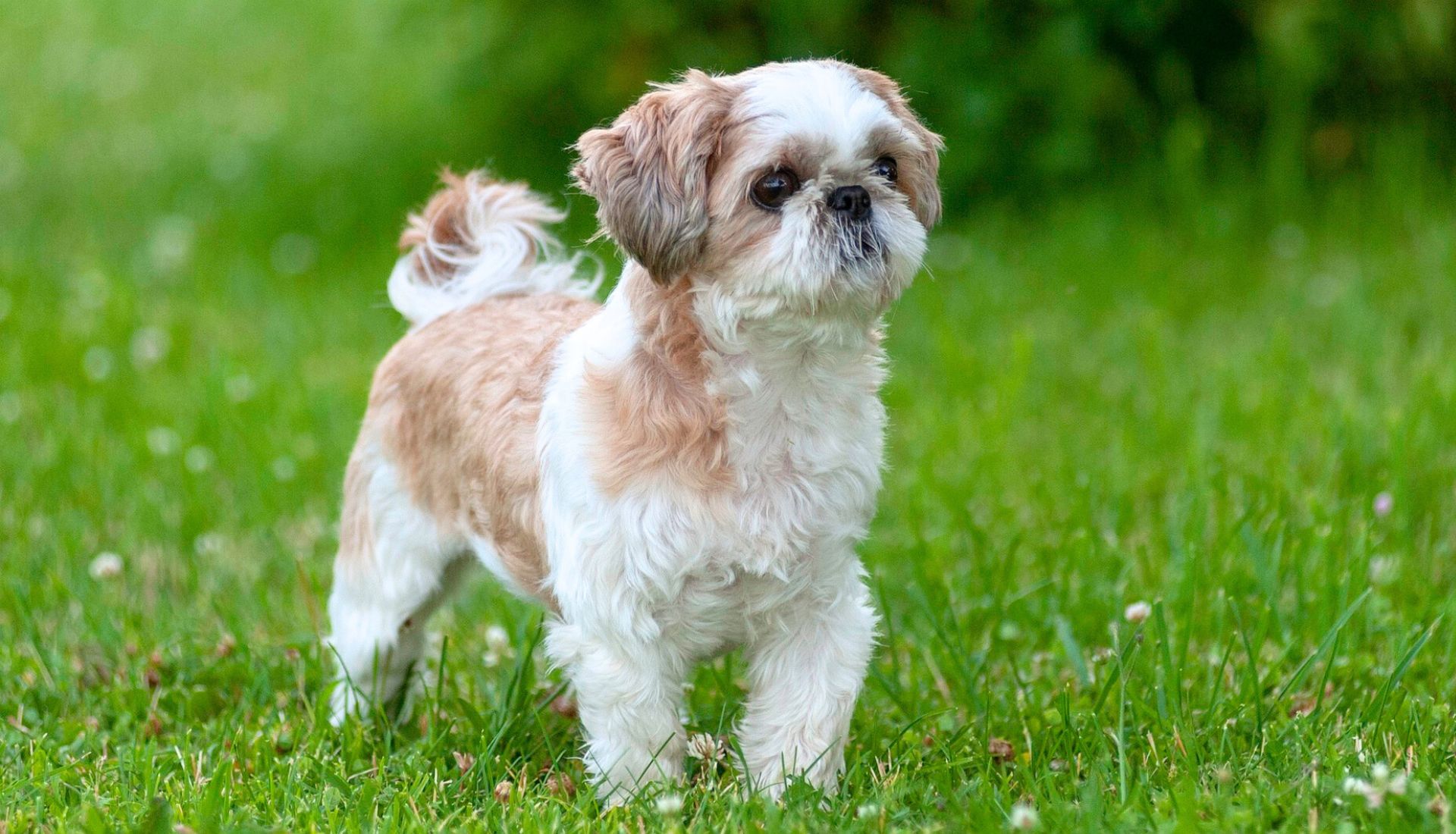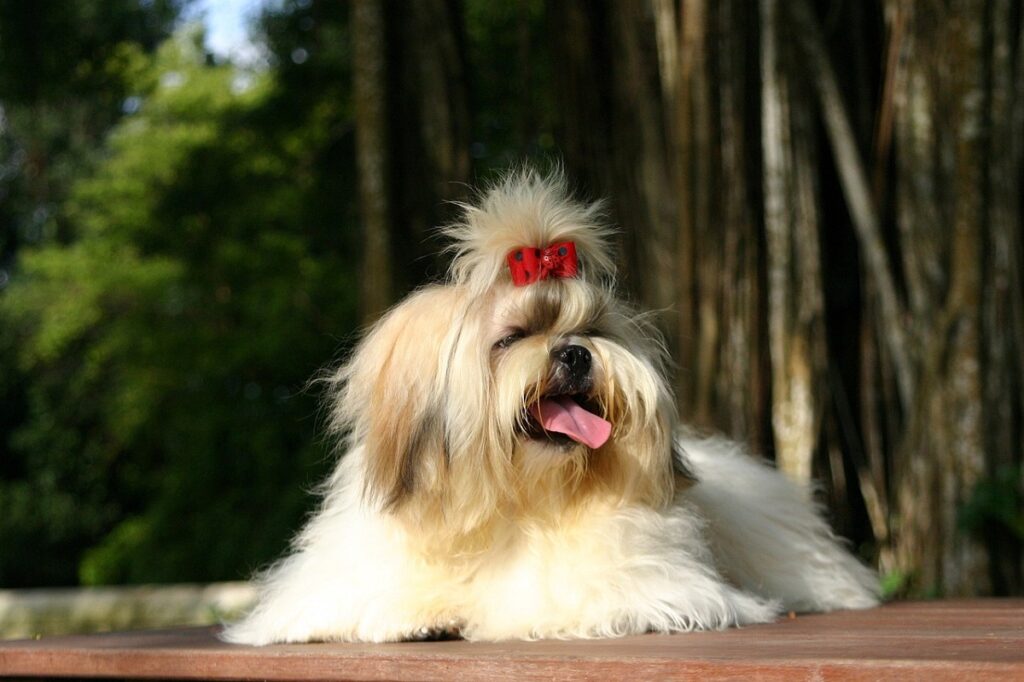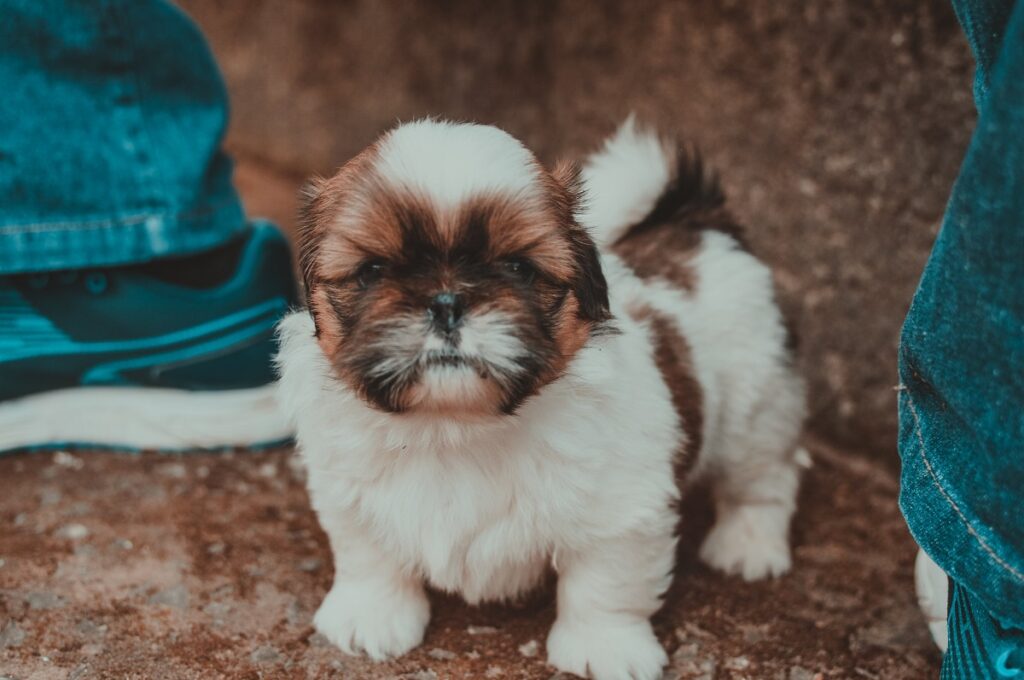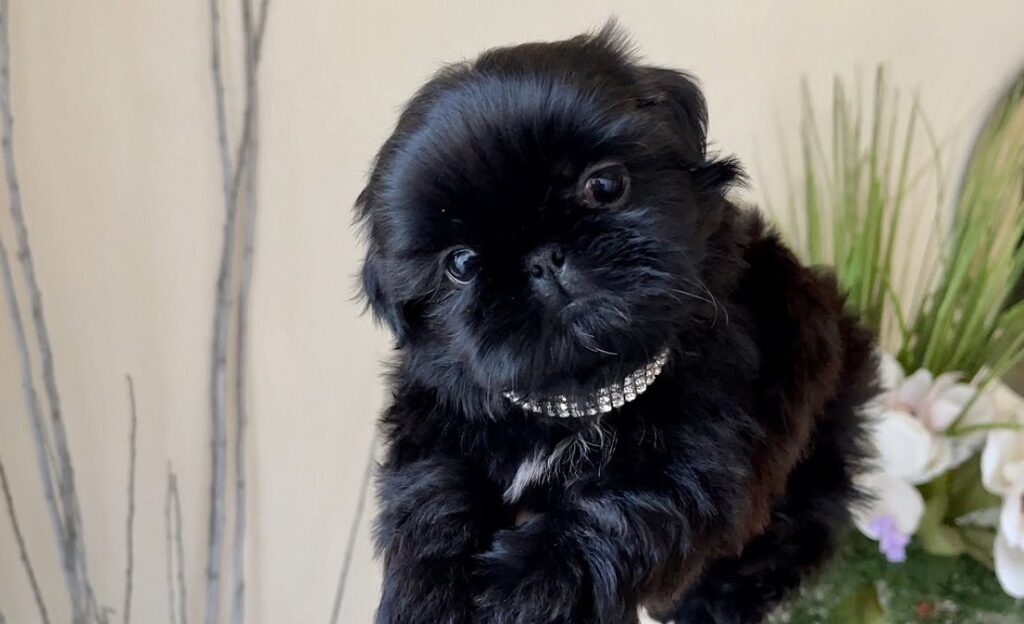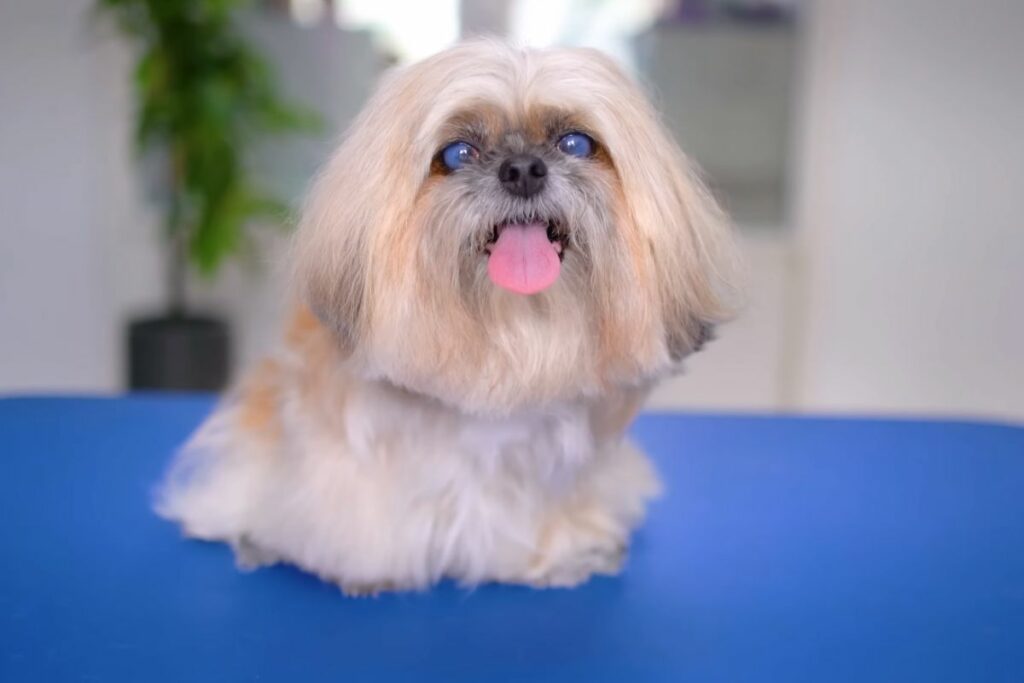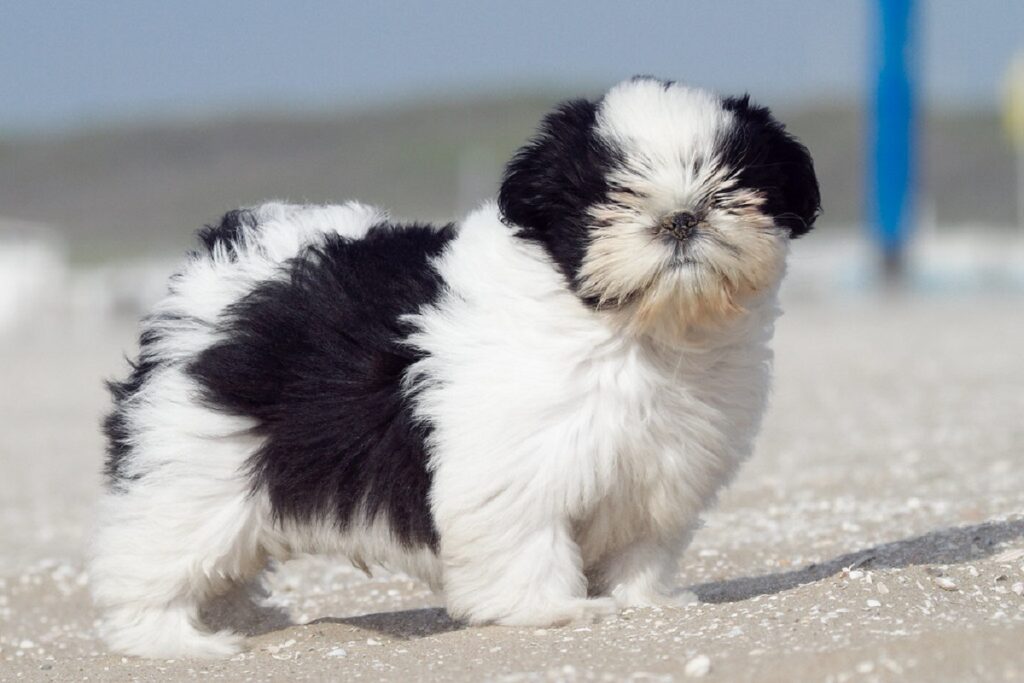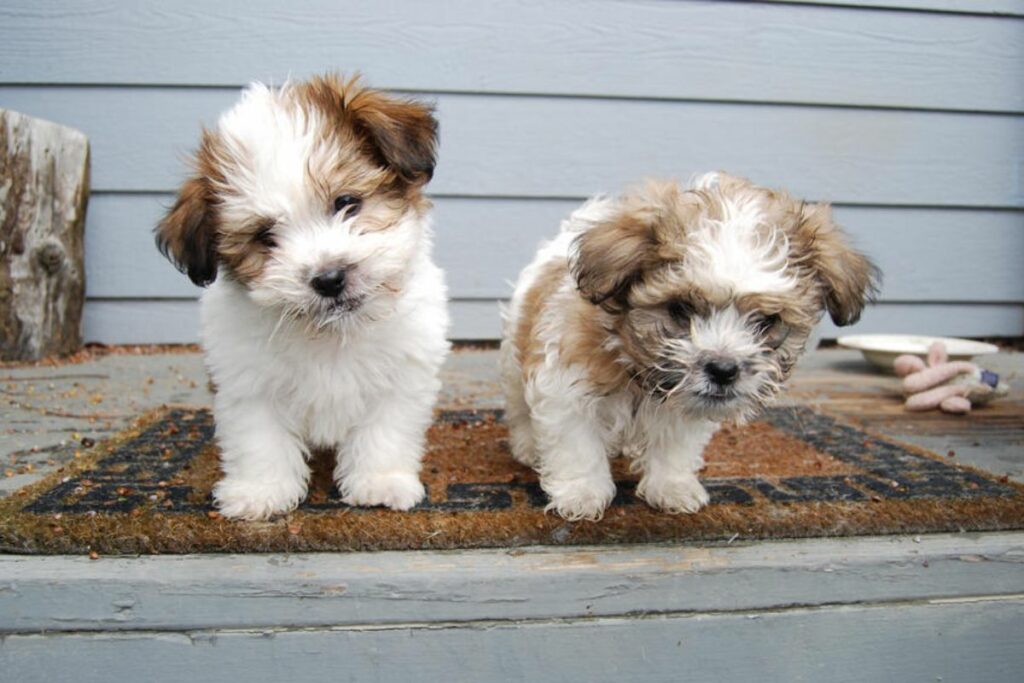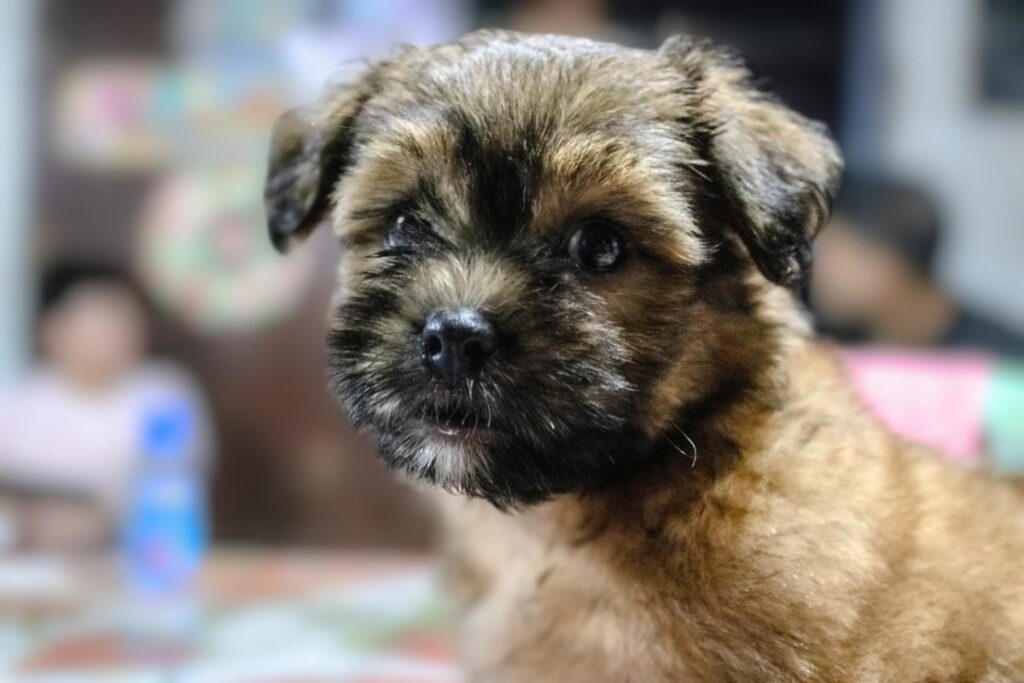Shih Tzus, those adorable, fluffy companions, come in more variety than you might think! While not technically separate breeds, eight distinct Shih Tzu types exist, differentiated by coat color, pattern, and sometimes size. This comprehensive guide explores these variations, from the classic black and white to the rarer liver and brindle. Whether you’re a seasoned Shih Tzu owner or considering adding one of these charming dogs to your family, understanding the different types is key to appreciating the full spectrum of Shih Tzu beauty and personality.
Owning a Shih Tzu connects you to a piece of ancient Chinese history. Developed centuries ago in the Chinese emperor’s palace, the ‘lion dog’ or Shih Tzu emerged from Tibetan breeds, likely a blend of the Lhasa Apso and Pekingese.
Historically cherished as royal lap dogs, shih tzu puppies were given as gifts, exclusive to the imperial family, and hidden from the world until the 1930s. Their journey outside the palace walls began with breed clubs in Peking and England.
Today, the Shih Tzu is a beloved toy dog both in the US and globally, continuing to treat their owners with regal affection. There are eight popular Shih Tzu types, each with unique characteristics, alongside various mixed breeds.
Shih Tzu Breed General Characteristics
Shih Tzus, with their endearing faces and big dark eyes, have captured the hearts of owners for centuries. Known for their playful and mischievous nature, these sturdy little dogs boast a beautiful coat that comes in various colors. Their grooming effort is rewarded with stunning beauty.
Inherently cute and lively, Shih Tzus are particularly affectionate towards children. Ideal for apartment living due to their small size and history as indoor companions in royal palaces, they thrive in cozy spaces.
Unlike more active breeds, a Shih Tzu prefers lounging on your lap and being adorable, making them perfect for relaxed indoor environments.
Different Types of Shih Tzu
Now, let’s discover the diverse and charming world of Shih Tzu types, each with its unique attributes and endearing qualities.
1. American Shih Tzu
Recognized by the American Kennel Club in 1969, this purebred variety is distinguished by its square-shaped head, shorter muzzle, short neck, modest chest volume, and small, wide-set eyes. These features give the American Shih Tzu a distinct appearance, including a shorter body and longer limbs compared to their European counterparts, leading to a more vibrant movement.
The American Shih Tzu, typically larger than its European counterpart, stands at an average height of 10-11 inches and weighs between 14-26 pounds. Characterized by a thick coat that can be either straight or slightly wavy, this breed presents a variety of colors, including black, white, gold, and silver.
Known for their independence, they are well-suited to being alone for extended periods and exhibit an outgoing and friendly demeanor towards strangers. Playful and affectionate, the American Shih Tzu makes a wonderful family pet, popular for being good with children and adding joy to household life.
2. European Shih Tzu
Officially recognized by the UK Kennel Club in 1946, the European Shih Tzu differs from its American counterpart with voluminous heads, wider chests, longer necks, and front legs that curve back slightly.
The European Shih Tzu, generally smaller than the American variant, stands at an average height of 7-11 inches and weighs between 10-26 pounds. This breed is known for its long, silky, and often wavy or curly coat, which is softer and more delicate compared to its American counterpart.
Typically, the European Shih Tzu is solid white with distinct patches of color on the nose and tail. They are characterized by a more rounded head, a shorter snout, and closely set eyes, along with a longer body and shorter legs.
Known for being particularly affectionate and loyal to their owners, these dogs tend to be more reserved and shy around strangers, making them ideal for families seeking a devoted and gentle companion.
3. Imperial Shih Tzu
Although not recognized as a pedigree, the ‘Imperial’ or Toy Shih Tzu is often sold as purebred. Imperial Shih Tzus are remarkably small, weighing under 5 pounds; their diminutive size can, unfortunately, pose significant health risks due to smaller internal organs, leading to potentially severe health issues.
Despite their tiny stature, Imperial Shih Tzus are well-suited for indoor and apartment living. They embody the quintessential Shih Tzu traits of loyalty, playfulness, sturdiness, affection, happiness, and an outgoing, energetic nature. These dogs are also prized as excellent lap dogs, known for their trusting and content disposition.
However, it’s important to note that the lifespan of Imperial Shih Tzus tends to be shorter compared to standard breeds, typically ranging from 8 to 10 years. This is mainly due to their health challenges.
In contrast, standard Shih Tzus can live up to 14 years or more. While life expectancy can vary and is not always predictable, the smaller size of the Imperial Shih Tzu is a significant factor in its overall health and longevity.
4. Black Shih Tzu
Rare and striking, the Black Shih Tzu is characterized by its solid black coat, often with subtle shades of chocolate or blue, and dark-colored eyes, noses, and paw pads. Black Shih Tzus share the breed’s typical physical traits, including a charming overbite, wide and friendly eyes, and a compact body.
Their long coats are particularly striking, featuring soft, silk-like fur. To be recognized as a solid black Shih Tzu by the American Kennel Club, they must not exhibit any other colors. This requirement extends to their noses, paws, and eye rims, which all need to be black.
The coat of a black Shih Tzu may vary in intensity, ranging from a deep, dark black to a lighter shade, and may develop patches or streaks over time. Finding a truly solid black Shih Tzu can be challenging, as many Shih Tzu carry a gene for colored patterns in their lineage.
Like other Shih Tzus, black Shih Tzus are hypoallergenic, making them a popular choice for those with allergies. Their unique coloring, combined with the breed’s well-known friendly and affectionate nature, makes them a sought-after variety of Shih Tzu.
5. Blue-eyed Shih Tzu
Blue-eyed Shih Tzus are a rare occurrence in the breed. These dogs have blue eyes due to a genetic variation that affects pigment synthesis, resulting in dappled skin and coat colors and blue iris pigmentation.
The presence of blue eyes is not due to their coat color but rather a genetic trait involving a lack of the color gene for black. This absence leads to a dilution in pigmentation, resulting in the distinctive blue eye color.
Shih Tzus are known for their variety of coat colors, ranging from single hues to a mix of two or more shades. However, the coat color itself does not influence the eye color of these dogs.
Instead, to determine the potential for blue eyes in a Shih Tzu, one should examine the pigmentation of the dog’s nose and muzzle. It’s these areas, rather than the hair color, that are indicative of the genetic likelihood of having blue eyes.
6. Japanese Shih Tzu
Often mixed breeds like the Jatzu, the Japanese Shih Tzu is not a purebred. These dogs, typically a mix with a Japanese Chin, are known for their intelligence, stubbornness, and charming appearance.
The Jatzu, a delightful hybrid, is small and easily adaptable to various living conditions, boasting a luxurious, silky coat that ranges in length from medium to long. These hybrids exhibit a variety of colors, with apricot, black, brown, cream, and golden being quite common. The Jatzu’s body often has a square proportion, though some inherit the longer back characteristic of the Shih-Tzu and feature tails that are abundantly feathered and curve elegantly over the back.
Their heads can either have the flat skull of the Chin or the rounded skull of the Shih-Tzu, complemented by a short, square muzzle. Their dark, round, and wide-set eyes are remarkably expressive. Known for their intelligence and responsiveness, this type of Shih Tzu dog is generally highly trainable.
While Jatzus are typically peaceful with people and other animals, their tolerance for boisterous children or playful mischief can be low. It is advisable to supervise interactions with young children to ensure safety and comfort for both the child and the dog.
7. Teacup Shih Tzu
Teacup Shih Tzus are charming, miniature versions of the classic Shih Tzu breed, capturing hearts with their tiny stature, button eyes, silky coats, and expressive faces. These captivating dogs are the result of selective breeding aimed at miniaturizing the Shih Tzu while preserving its delightful traits.
It’s important to clarify that “teacup” is a descriptor of their size and not an official breed category.
Typically, Teacup Shih Tzus weigh between 4 to 7 pounds and have a height of about 6 to 9 inches. They are celebrated for their friendly, loving, and sociable personalities, making them perfect companions for both individuals and families.
Their small size and endearing nature make them particularly appealing to those seeking a pet with the classic Shih Tzu characteristics in a more compact form.
8. Brindle Shih Tzu
“Brindle” refers to a distinctive coat pattern seen in some Shih Tzus, characterized by darker splotches, streaks, or patches seamlessly blended with a lighter base color. This results in a unique striping effect akin to tiger stripes but with a softer, more blended appearance.
The brindle pattern typically incorporates a mix of colors, including whites, creams, golds, browns, grays, and black, with the darker tones often appearing in rich black, brown, or gray.
Brindle Shih Tzus, while not rare, are less common than their solid-colored counterparts. The American Kennel Club recognizes two brindle color variations in the Shih Tzu breed: “Brindle” and “Brindle and White.” To qualify as a brindle Shih Tzu, the dog should have black paw pads, eye rims, and a nose.
It’s interesting to note that the brindle coloration in Shih Tzus can change as they mature. The pattern seen in a brindle puppy might evolve as the dog grows, with the brindle either fading or becoming more pronounced in the adult coat.
Conclusion
The diverse array of Shih Tzu dog breeds, from the classic American and European to the unique Imperial, Black, and Brindle, offers a rich tapestry of choices for enthusiasts of this breed.
Understanding these variations not only enhances the appreciation of the breed’s versatility but also aids in selecting a pet that aligns with one’s lifestyle and preferences. Ultimately, regardless of the type, Shih Tzus continue to enchant us with their affectionate nature, making them beloved companions in homes around the world.
The Shih Tzu, with its charming personality and luxurious coat, offers appealing variations within the breed. While not technically separate breeds, the eight common Shih Tzu types categorized by color and pattern provide a glimpse into the diverse beauty within this ancient lineage. Whether you’re drawn to the classic black and white, the striking brindle, or a richer solid color, understanding these variations helps appreciate the unique charm each Shih Tzu possesses. Ultimately, regardless of coat type, the affectionate and playful nature of the Shih Tzu remains its most endearing quality, making it a beloved companion for many.

